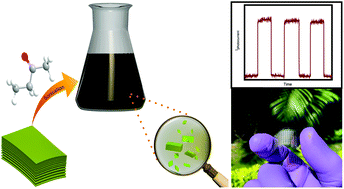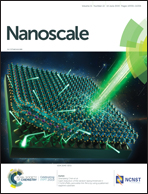Highly concentrated and stabilizer-free transition-metal dichalcogenide dispersions in low-boiling point solvent for flexible electronics†‡
Abstract
Liquid-phase exfoliation has provided an efficient and scalable route to obtain dispersions of layered materials. Dispersions in low-boiling solvents facilitate the ease of processing; however, the challenge of obtaining them at high concentrations still prevails. Herein, the use of 2-butanone (B.P. 80 °C) as an effective solvent for the exfoliation of transition-metal dichalcogenides is reported for the first time. Among these, MoS2 was studied in detail to maximize the dispersion concentrations, reaching values up to 5.5 mg ml−1 without the use of any stabilizer. This exceptional efficiency of 2-butanone to exfoliate and stabilize the dispersions at high concentrations enabled the size separation of nanosheets by liquid cascade centrifugation. Extensive characterization by spectroscopic and microscopic techniques revealed the efficacy of the proposed process in separating mono- and few-layers. To showcase the utility of this low-boiling point solvent, a flexible photodetector was fabricated by spray-coating the dispersions on a polyethylene terephthalate substrate. The device exhibited a fast response time (<50 ms) and 80% retention in responsivity after 1000 flexing cycles. The present study suggests that molecular interactions between the solvent and nanosheet could play a critical role in the achievement of high efficiencies and provide an additional aspect to consider in solvent selection, along with the Hansen solubility parameters.



 Please wait while we load your content...
Please wait while we load your content...